INSIGHTS: How I Realized my Dream to Sail around the World – Part 1
Now more than half way through his circumnavigation, having set sail on his Beneateu 44cc SV Cajucito from Cork in the south of Ireland in August 2016, Bill Forde tells us how he achieved his dream to sail around the world in a series of articles for INSIGHTS. Part 1 begins with the planning stages and what steps Bill took to find the right boat for his circumnavigation.
Published 4 years ago
So far I have crossed the Atlantic in 2016 and the Pacific in 2018/2019. Up to now I have been a solo sailor, picking up hitch-hiker crew (more than 40 so far) along the way. My boat is currently in New Caledonia where it was damaged in a cyclone, but is now almost fully repaired. I am back home in Ireland waiting for borders to re-open to continue to SE Asia and across the Indian Ocean towards the Mediterranean or South Africa. I hope to resume in March 2021, hopefully, Covid allowing.
I was encouraged by friends in the cruising community to write about my experiences so far and with time on my hands I have written a short series of how I realised my dream to sail around the world. This first article is about me and how I first had the idea and the steps towards getting the right boat. I will continue with other articles which are listed at the end. Each article is approximately a 15-minute read. I know it’s been done a hundred times before, but everyone’s experience and opinions are different. The plan is to be informative, encouraging to budding long range sailors, and a few twists turns and a bit of entertainment to keep everyone interested. I am not an expert as a writer or as a sailor, but I do have a story to tell.
Part 1. Conceiving the Dream – The steps to getting the right Boat
I have being sailing for a great many years and living aboard now for more than 4 years, so I believe that I am qualified to talk about it. I am not proclaiming to be an expert on anything, but I have a lot of experience in long distance sailing and living aboard, so hopefully you will benefit from, and enjoy hearing about my experiences.
How I Became a Sailor:
I have had a calling to the sea for a long time, but not for all of my life. I bought my first boat when I was raising a young family and busy working hard to support my growing brood. I was about 33 and my family was a full-time job (a very happy time in my life). I had my own business developing software and providing IT support services for my Customers.
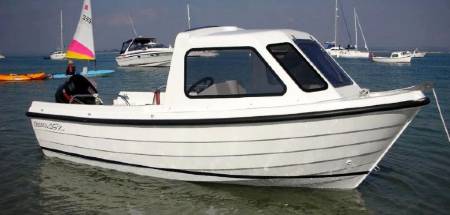

My first boat was a 19 foot fishing boat with an outboard engine and a small cabin. It was an Orkney Fastliner 19 with a double hull and good buoyancy chambers. I believed that the space between the outer and inner hulls was filled with 100’s of small plastic bottles. The idea was that if you hit a reef and breached the outer hull and even the inner one, only a small number of the bottles would be damaged and the rest would keep you afloat. Thankfully I never got to find out if that was true or not. My children loved the sea fishing trips, river cruising and overall fun we had with that little boat.
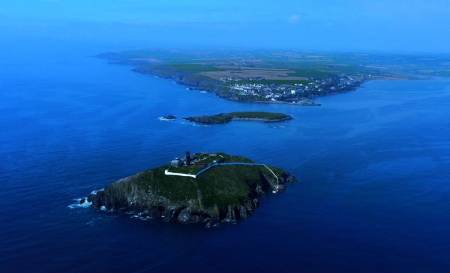

One Sunday afternoon I was fishing with a friend who also had a similar boat. It was a beautiful day and I was having a great time on the water as usual. That evening we met in a local bar and shared a drink while discussing the days fishing. I remember saying that it was a shame that we had to work the following morning as the weather was so good. As it was midsummer, my friend suggested that we get up very early in the morning (Monday) and go out again before we faced the week’s work. I have always loved mad ideas, so I jumped out of bed at 04:15 as the dawn broke and hitched the boat for launching. Needless to say my other half was not impressed.
There was a thick sea-mist as we launched the boats in what promised to be another beautiful day. I motored out to sea through the mist for about 45 minutes and when the mist started to clear I saw a large yacht sailing across my path. She looked magnificent under full sail and was heading for the Biannual Sailing Regatta in Cork Harbour. I was mesmerized. She seemed almost like a ghost ship appearing out of the mist. She was not going fast as winds were very light, but she was so graceful as she glided almost silently through the water.
The helmsman gave me a wave and I waved back. It was not a dangerous close encounter, but we were close enough. I cut my engine, sat there for a while and watched her disappear back into the mist. In that instant I decided to buy a sailboat and make a plan to circumnavigate the world.
That was it! A huge turning point in my life had just happened without me even realizing it. Ever since that day I have wondered what would have happened had I gone to work instead that Monday morning as normal. My friend had absolutely no idea of the enormous gift he handed me that day with his whacky idea to go fishing before starting work on a Monday morning.
No spare money to buy a sailboat:
I knew absolutely nothing about sailing, but that day was like a spiritual awakening. I have always been impulsive and I believe we only live once. I was still a young man when my family arrived, but I needed something big to look forward to once they had all flown the nest. I was never going to sit at home and put my feet up. I had no spare money to buy a sailboat but I was going to start researching immediately.
I told no one about my crazy – very ambitious – plan, but before the sun went down that day my ‘fishing boat for sale’ advert was submitted to the local newspapers classified adverts, and I was browsing local boat yard listings. I bought my fishing boat on an impulse but I was now looking for a family sailboat that I could learn to sail on, and possibly sail offshore in. It was going to be necessary to get my whole family in on the act.
To my surprise the idea of a sailboat received a positive response. We enjoyed being on the water and a sailboat seemed a natural progression.
I got a good price for the fishing boat which was in pristine condition and applied for a loan to make the big jump to sail. I found what looked like the perfect starter boat, but could not conclude the deal. This was just the first of many disappointments I was guaranteed to have along the way, but I was determined to get on with my plan.
I wanted a bigger-than-average weekend sailor as I needed to go offshore to learn all I needed to know. Then I found an old lifting-keel boat that was structurally sound but cosmetically needing a lot of work. It had been neglected for years, but was just about affordable. I loved working on projects so I decided to give it a go. The bank provided the money (I had no idea how I could make the repayments), but she was mine.
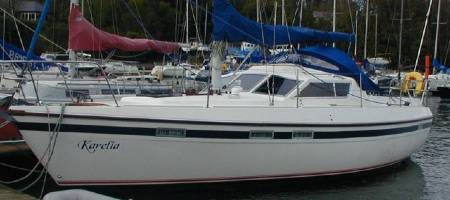

My family, at that time, was supportive but not really interested or involved in the process. I toiled every waking minute that I was not working on my new boat and soon had her ship shape. She was a Southerly 105 built in England and had a good reputation as a strong capable yacht. She was old, but once cleaned up she was in very good condition. We all loved that boat but I had a lot to learn. My plan was to use her for learning everything I needed to know for as long as that took and then many years into the future trade her for my dream ship.
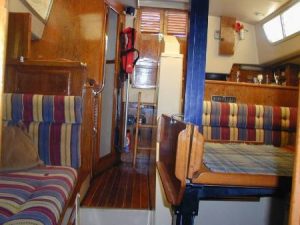
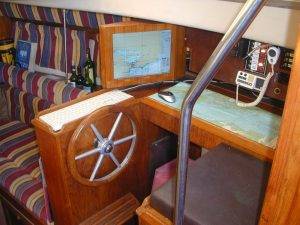
Inside steering and integrated PC Chart plotter. The flat screen swiveled out for watching movies – she scrubbed up well!
Learning through trial and error:
Restoring Karelia was fantastic fun and I learnt so much both working and sailing on her. I got a good deal on cushion cover material and probably over did it a little bit. I fitted all new instruments and I would safely say she was the first yacht in Ireland with a built in PC-based chart plotter, which greatly impressed my sailing friends at the time!
Marine instruments and systems were all new to me. Knowing how everything works, how to install, commission, and fix everything on board was a headline item on my to-do list. Once I got stuck in, learning all I needed to know was easier than I thought.
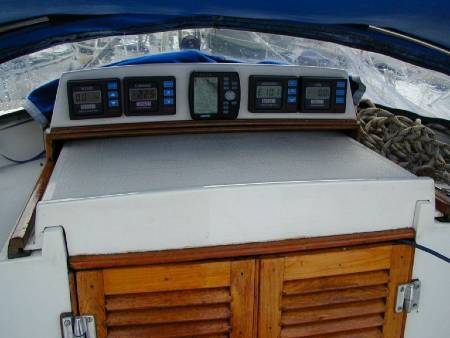

Getting the family on board:
It was time to share my master plan to sail around the world with the family. I thought about it for weeks. How was I going to present it to them? Talking about investing more money in my crazy ideas was not going to go down well when the house needed fixing, or the 100 other draws that there are on any family budget. I braced myself for a negative reaction, but nothing was going to stop me from succeeding in what I now saw as my destiny.
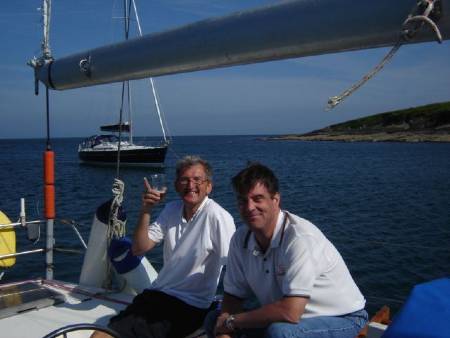

“That sounds like a great idea” said my young Son, “can I come too?”” That was the only response I got when I finally had the courage to reveal my plan at the family dinner table.. “Yep your dad has great ideas all right… do you want more potatoes?” The bottom fell out of my world – no one thought I was serious. The grand master plan that by now I had so meticulously sculpted went through the floor like a ton of bricks.
Keeping the dream alive:
“Ok, so no one is interested, that’s Ok”, I thought to myself. I was now more determined than ever. I did not care how long it took, I knew I was going to do it someday. I went racing on a friend’s boat on weekends and learned about the art of sail trim. At this point I was totally hooked on my idea and enjoyed every tiny step I took towards my final goal.
I dreamed of seeing the land disappear behind me as I sailed away out to sea from the same spot where I first conceived the idea many years previously. That location would be my start and finishing point. I drove to the headland near that location on many occasions during the dark winter months on my own, and just sat there gazing out to sea.
By this time, I now knew how to sail, navigate, read weather, and fix mostly everything on board. I joined a local sailing school and attended winter classes to achieve Royal Yachting Association Yacht master level 4 (RYA YM4). I volunteered as a rescue boat helper for the visit of the Tall Ships race to Dublin, which was a huge maritime event in the city. Because I already had Yacht Master level 4, I was chosen for an intensive course to be a Rescue Cox which I found very tough, but I thoroughly enjoyed. My dream, my plan, and its slow but steady execution empowered me, excited me, drove me onwards.
Planning for the dream boat:
I never wanted to be rich and had absolutely no interest in earning more money than I needed. My kids were now happy teenagers and I could see the starting line – it was going to happen. Now was the time to start looking for the boat I had dreamed of for so long.
I had a very clear idea of what I wanted with every detail worked out over and over. I knew I would never find a boat that was exactly everything I needed and there would have to be compromise. In order to prepare her the way I wanted I needed to allow time and money – 3 years minimum to know every inch of her, to perfect her doing all the work myself. I planned to finish work one year before I set sail and spend as much time on her as I could for that year.
I needed to have the confidence to sail away single-handed if necessary, but I was hoping for crew. My children would be beginning their own lives and I knew they would not sail with me – except perhaps for holidays.
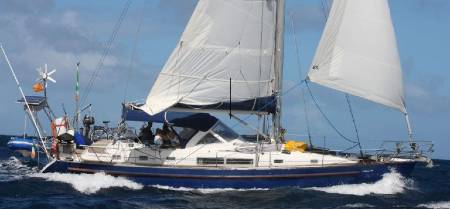

My learner yacht, Karelia, sold for a good price and after months of searching I found the boat I was looking for and made an offer. She had only just come on the market and she was as close as I was ever going to get in terms of my check list. She was priced well over my budget, but I decided I would get around that somehow. At this point I was weary from looking at boats and time was not on my side, so I bought her. My plan to know her every last detail and fit her out properly was going to take years, however I still had a few years more of working so the plan was perfectly on schedule.
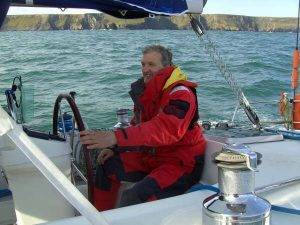

Dreams come true:
As soon as I saw her I knew this was it. The broker was surprised when only after a few minutes on board I made a serious offer. The decision was made in minutes and the deal was done there and then. This boat had been well cared for and had been refitted for offshore cruising. She had alot of what I wanted, but not everything. I figured she was big and strong enough to keep me safe and could easily be single handed, a key requirement.
I flew from Ireland to France to view her and soon put all the finance in place. A week later I was flying back to France with a few friends to sail her home. A 2001 Beneteau 44 CC was the boat to make my dream come true. Cajucito was her new name as the French name she had did not sound right in English. I used the first 2 letters of my children’s names to create the name: CAitriona; JUlie; CIaran and TOmas would always be part of any plan I made in my life.
What I think makes a good offshore cruising boat:
I had decided that a center cockpit monohull between 38 and 48 feet would be my ideal boat many years before. I was not a rich man and I had to be realistic. My learning yacht was a 36ft strong boat with a lifting keel. She was very strong and a capable passage maker but not big or heavy enough in my view. Also her rig was a simple sloop and I needed a cutter rig with running backstays and a twinfoil forestay. I had decided on my sailplan and rig setup after much research. A strong Rig that can be quickly downsized with running backstays is an absolute must in my view for safe offshore cruising.
Even though as a sailor, you will do everything possible to avoid bad weather at all costs, if you are planning to circumnavigate or cross oceans, then its only a matter of time before your luck runs out and you find yourself battling big seas. When crossing oceans, it simply is not possible to forecast weather for the entire trip. Heavy weather sailing is almost inevitable, so you and your boat better be ready for it.
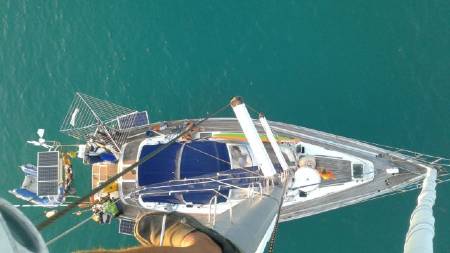

Everyone has a different opinion on how best to deal with very heavy seas. Heaving to, closing the hatches, and saying prayers is not a good plan in my view. My plan for this inevitability was to 3/4 my rig with strong storm sails and sail fast across, and slightly up into, the weather avoiding the breaking crests as best I can. Even on a very dark moonless night you can still see the breaking crests. This plan may not be the best plan – but it is my plan.
The first big sea I encountered on my voyage was crossing the Bay of Biscay in September, which has a reputation for being very testing, and it lived up to its reputation. I quickly furled the headsail, downsizing the rig, set a strong Trisail hanked on to the inner forestay with 3 reefs in the mainsail, tightened up the running backstays and sailed hard and fast through it for what seemed like a long time. It was exhilarating sailing, and a great confidence builder to see my heavy weather sail plan work so well.
I had a very nasty experience many years previous, on a friends boat in the Mediterranean sea when we encountered 65 knots sustained wind and got rolled almost 360 by a huge rogue wave that hit us beam on, on a very dark night. The 36ft monhull suffered a lot of damage in that incident. But she righted herself and we got safely to port without assistance. I learned a lot that dark night and luckily survived to tell the tale. That rogue wave was enormous and would have rolled a 50ft catamaran in my view. We actually mistook the breaking crest straight up above our heads as a break in the clouds. I can laugh about it now, but it was not very funny when it crashed down on us with huge force.
The spray hood, liferaft, dinghy, outboard engine, lifelines, EPIRB, handheld VHF and everything else on deck or in the cockpit that was not part of the boat’s superstructure, was washed away. When we arrived under engine 30 hours later in one of the few east-facing ports on the Spanish coast, our spare life jackets were wedged between the forestay and the top of the mast. The spreaders and shrouds were a dangling mess but miraculously the mast stayed up – the 36ft monohull survived.
There is a reason why most boats on circumnavigation routes are monohulls. Catamarans are increasing in popularity, but monohulls are much more affordable and way cheaper to own and maintain. Plus, in my view, a much larger catamaran would not have survived as the monohull did. That was the night I decided I was never going to attempt an ocean crossing in a cat. I had once sailed offshore in a friends 40ft cat in what I would call moderate seas, and I never really felt safe on it. My budget was not going to finance the purchase of a big enough cat – and I accept that big cats are safe, but any cat under 50ft would not be safe enough for me.
The other thing I learnt that night was that if you have to pump out a very large amount of sea water from a flooded boat, forget about your bilge pump. A frightened crew member with a big bucket is the fastest bilge pump on the planet.
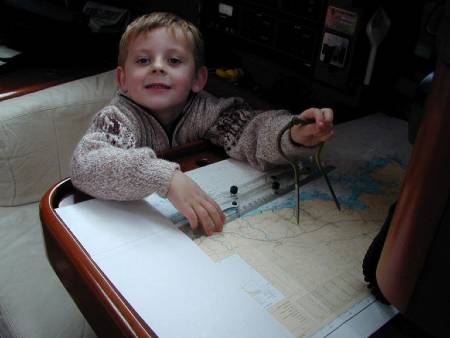

Many things including research and experience forged my decision to buy SV Cajucito. To date she has taken me safely and reliably more than half way around the world.
I crossed the Atlantic in 2016 and the Pacific in 2018/2019. Every boat in the world has at least one big fan – the person that owns it. I would not change much about her, except perhaps her long narrow galley. I have done many small repairs and modifications and upgrades since I first bought her and all have proved great investments. For me she is safe comfortable and reliable and I have a lot of confidence in her. But no boat is invincible or perfect. We all have a limited budget and everyone is going to try to get the best boat they can.
Sailing offshore is no doubt risky, but if your boat is well prepared and you are capable and prepared to analyse, manage and minimize the risks on every passage you plan, then the risk is very tolerable. It is my view that any boat can sail around the world if the Captain knows what he is doing and has the boat well prepared.
Friends I know are circumnavigating in boats as small as 26ft. They bought the best boat they could afford and so did I. I would love an Oyster 56, but I believe it needs a minimum crew of 2 and anyway, I could not afford one at the time I bought Cajucito.
Being able to sail single-handed is very important to me because I can not always guarantee that I will have crew. Being single-handed increases the risk, but sometimes you just have to do it. Everything that is worthwile in life carries some risk. But in order to achieve, you must be prepared to take risks. I can promise you that the rewards are worth it a million times over.
A dream sustains you when times are tough:
Cruising around the oceans of the world and living on board has been one of the most enjoyable, educational ,and incredible experiences of my life to date. I can honestly say that I have learned more in the last 4 years than I did in the previous 60.
My dream was conceived a long time ago while I was dedicating my life to my family and my work. I always did the best I could for those that mattered most to me and never thought too much about myself. But I believe that unless you create happiness for yourself first, you can’t make anyone else happy, and so my dream sustained me when times were tough.
Now that my Family are all raised and settled in their own lives, it’s time for sailing.
As we are all so well aware, the world has changed dramatically in 2020, and sailing is on hold for now while we all come to terms with living with a pandemic. But I am forever the eternal optimist. Bad times don’t last forever, the vaccines have materialised, and I just can’t wait to get back to sea and continue my Voyage.
Capt. Bill
SV Cajucito – IRL 3382
……………………………………………………………………………………………………………………………………….
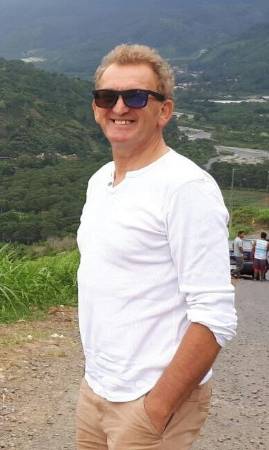

Bill Forde is a single-handed cruiser from Cork in Ireland, currently four years into a circumnavigation on his Beneteau 44cc SV Cajucito.
Bill will be sharing future articles with Noonsite on the following aspects of his voyage so far:
Cruising Routes to Date;
Cruising Friends and Community;
Technical Details – about the boat, her equipment and rig;
Repairs and Tools: How to Maintain Your Boat Yourself;
Liveaboard Costs and Finance;
Future Plans: Taking the Family On Board;
A day in the life of a long distance liveaboard Sailor;
My Next Big Plan.
https://www.facebook.com/bill.forde.1
…………………………………………………………………………………………………………………………………..
Related Links:
…………………………………………………………………………………………………………………………………..
The opinions expressed in this article are the author’s own and do not reflect the view of Noonsite.com or World Cruising Club.
Related to the following Cruising Resources: Circumnavigation, Circumnavigation, Cruising Information, Insights, Planning and Preparation, Routing




Hi Bill. Great read! We also have a Beneteau 44cc and I am so excited to read your article. We are from Buffalo, New York on The Great Lakes, where I raced avidly for 35 years. But my life took a turn, and I am remarried and cruising 8 months ea year, before returning to NY for our skiing winters. We bought a 1996 Beneteau 44CC like yours in Antigua in 2012 and are about to sail across the Atlantic to Ireland, via the Azores. And so many cruisers have said a fin keel, spade rudder boat like ours is NOT a blue water boat. Well after reading your article, we are feeling much more confident and ready to go. We have equipped her and updated her and added tons of new stuff. And we have completed 20,000 miles sailing most Caribbean islands, Cuba, Haiti, and all the rest down to Grenada then up to sail all of the Great Lakes, then the Great Loop of N America, and spent two years in the Canadian Maritimes – really loved Newfoundland. But it is time to sail across the pond. I am so anxious to hear more about your sail plan. We converted from sloop to a cutter, added a staysail and running back stays. But what I don’t understand is how/why you would put a storm trisail on a forestay, rather than on the mast in place of your Main sail. How did you do that? I will send a Facebook friend request too if that’s alright. I have so many questions for you. You are the only skipper we know who has a Beneteau 44CC like ours and uses it for blue water sailing. Way to go, Bill! It’s more about seamanship then about the boat. (to a certain extent)!
Deborah and John Rapp on s/v Mahayana.
Hi Deborah and John its great to meet fellow Beneteau 44cc owners. Ask me any questions you like but it seems you have covered all the important upgrades like running backstays and cutter rig like mine. Almost any boat is capable of crossing oceans with the right setup and I believe a strong rig and ability to downsize quickly and safely is a must have. The 44cc is a stronger boat than similar models that came after her. Unfortunately boats tend to be designed by accountants rather than engineers these days. Bavaria started the trend by introducing models that competed with Beneteau and Jeanneau at much lower prices but the quality and fittings were not the same and the french manufacturers started to cut pricing in order to compete and the quality and strength of the newer model boats suffered. You will enjoy crossing oceans as I did.. I may have not described my storm sail plan correctly. For heavy weather I put 3 reefs in the mainsail or set a storm sail which is a little smaller and stronger and I also use a trisail on the inner foresaty for balance. Tensioning up the runners relieves the top of the mast of any stress and I retain good control. Stay tuned for my next chapter detailing my route so far. Happy sailing.
Hi Bill,
What a pleasure for me to improve my english vocabulary about sail cruising reading your report !
Many hours to translate and undertand how prepare myself to follow your advices.
Thanks and have a good continuation !
Yves
Mont de Marsan 2012-02-12
Thank You. I hope my english is easy to understand. I met so many sailors and locals with different language but we always seemed to be able to communicate. My next article is coming soon stay tuned.
Hi Bill,
Thank you for this inspiring article.
Regards,
Tim, San Francisco
Thanks for your interest Tim, Stay tuned for the next chapter on my route so far.
Thanks Bill, a very enjoyable read and hope you get away again soon.
from Brian in Cork
Thanks Brian, Cant wait to get back afloat when its possible. My next chapter will detail my route so far so stay tuned here!
Where can I find the article to read? I have a 44CC as well
Just click on “Report Content” to open the report in full.